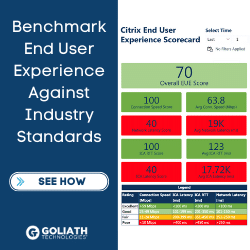Has the annual conference you always attend been turned into a virtual conference this year because of the COVID-19 pandemic? Many of them are, it will be strange to miss Dell Technologies World (formerly known as Dell World, formerly known as EMC World) this year.
Is it possible to get as much out of these conferences if we are not able to attend in person?
What Do We Expect When We Attend Conferences?
Why do people attend conferences? Attendees attend to hear vendor product experts present, and probably also to ask them questions about their roadmaps, or maybe product problems. They also come to meet with their community, attend vendor parties and concerts, and perhaps even get some downtime in a cool location.
If your company hosts the conference, you probably have responsibilities to share your product’s message with presentations and booth duty. The conference may be the launch vehicle for many of your products, and probably your partners’ products as well. You may take the opportunity to manage partner relationships and schmooze important customers and executives.
Is it possible to capture all this energy if the conference moves online?
Take the Time to Re-Design
It is absolutely possible to capture the energy of an in-person event. There is a good a bit of research about online communications that can be applied to this challenge. But be forewarned: if you’re looking to just lift and shift your event to a webinar platform, you’re going to disappoint your audience.
The top priority shouldn’t be which conferencing technology to choose for your virtual conference. The top priority to is to map out your expectations. Here is a list of suggestions to get your creative juices flowing:
- Do you want your attendees to understand a new product launch? Is a sales number based on this conference?
- Does the outcome look the same for customers, partners, press and analysts, and competitors?
The upcoming NAB Show has done some thinking on how to design online experiences for different audiences. Check out their show page here and a blog post about the design process here. - Do you want the same level of interaction between your product teams and your audience that would happen in a face-to-face conference?
- Do you want to reward your global workforce? Is it important to host a party?
- Do you still have vendors sponsor and create interactions with them?
Once you know your goals, it is important to realize that the way to virtualize everything is not by creating a schedule of webinars. You must design to make it interactive so that it captures that face-to-face energy.
Design a virtual conference for everyone
You have the chance to design an event that includes people who could never afford to attend, or who couldn’t get the clearance from their employer, or couldn’t travel for family reasons. Your customers know your products better than anyone in your organization, they are the ones that make them work with other products.
This is your chance to make them feel included appreciated. Take the time to design interactions to democratize your conferences and hear from all the voices of your customers. This blog post describes how one organization did this.
Virtual Conference Strategies
Since the COVID-19 I’ve been keeping track of how people are crafting their annual events into virtual conferences. Early conferences did lift and shift their events, but they didn’t have the time to do much more than that. But now we’re heading into the second quarter of travel shutdown, it’s time to create a smarter virtual conference.
Here is a list of things I’ve seen and heard about:
- Stretching a 5-day conference over 3 or 4 weeks. I’m not a fan of this format, it’s hard to carve out time over several weeks.
- Not changing the tone of keynotes. It just didn’t sit well with me to watch an executive bashing a competitor as he sat in his home office.
- Designing interactions to capture metrics. Forcing online participants to take surveys or any other gatekeeping really should be at a minimum. Don’t put up barriers to participate.
- It is hard to concentrate when I’m not at the venue. Blogger Chris Colotti listed this as the first reason that he hates a virtual conference.
- Think outside the box! Where does your audience consume information? Can you stream on Twitch and YouTube and host conversations on a Discord server? Can you hold sessions in Animal Crossing?
- Don’t forget about social. Don’t hide your community deep inside a bespoke virtual conference platform and don’t make it feel so contrived that people are afraid to interact.
- Design interactive events. One conference I heard about scheduled a worldwide watching party for The Yellow Submarine. Everyone watched the movie and made commentary during the movie.
- Take your customers to dinner. No one can go out to dinner, but most cities still have delivery. Why not deliver dinner to your customers and watch a keynote together, or have a slack meeting after?
Real Talk
It may seem like a real chore to redesign your conferences but think of this as an opportunity. This is an opportunity to reach your entire audience, your customers who may not have had an opportunity to attend the conference in the past. Think outside the box to make it fun and interactive.
As a conference attendee, what do you want conference organizers to know about designing an online conference for you?










Trackbacks/Pingbacks